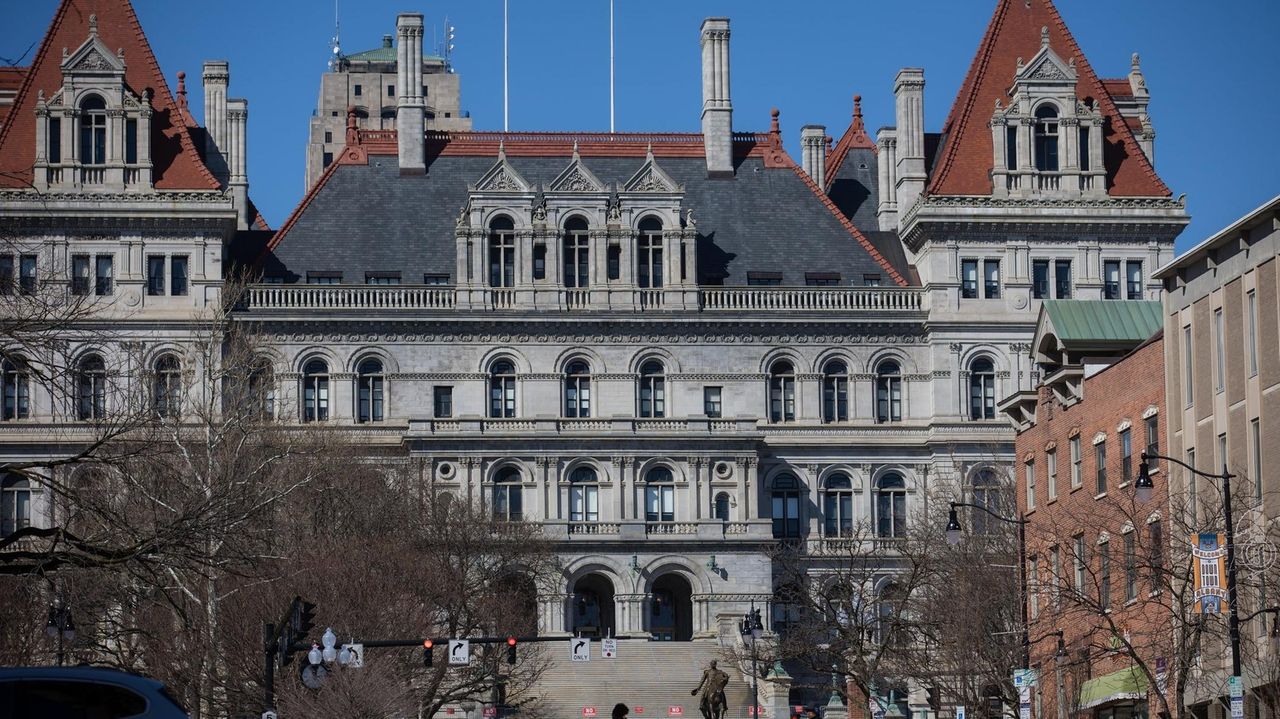The state Public Service Commission on Thursday affirmed a “reliability need” for a previously rejected natural gas pipeline into lower New York, advancing the National Grid-backed plan to expand availability.
The proposed Northeast Supply Enhancement natural gas pipeline, previously rejected by the state under former Gov. Andrew M. Cuomo, was granted new life earlier this year with support from the fossil-fuel favoring Trump administration and a willingness by Gov. Kathy Hochul’s administration to give it a second look.
The decision by the state Department of Environmental Conservation to reconsider the project followed negotiations aided by Hochul’s office to restore work on the Empire Wind project off Long Island.
In proceedings Thursday reviewing National Grid’s long-term gas planning, the PSC ordered the company to report on needed improvements to demand forecasting and submit reviews of a Greenpoint liquid natural gas facility, among other things.
The PSC also ordered National Grid to report on how it plans to “optimize supply sources” in the event NESE is placed into service. If it is not ultimately approved, the PSC said, National Grid also must report on “how to address reliability concerns” without it.
Sally Librera, president of National Grid New York, said Thursday’s PSC order “affirms our determination that the Northeast Supply Enhancement pipeline project is needed for enhanced reliability of our gas network. The increased gas supply from the NESE pipeline will bolster reliability for essential energy needs in Brooklyn, Queens and Long Island, while freeing existing gas supplies to better serve our customers on Staten Island and in Suffolk County.”
Critics were quick to pounce.
“The NESE pipeline is a climate and affordability boondoggle that New Yorkers should not bear,” said Chris Casey, utility regulatory director in New York for the Natural Resources Defense Council, an environmental activist group, in a statement.
He charged “nothing in the record justifies saddling families and businesses across New York City and Long Island with billions in unnecessary costs over fifteen years, increased air pollution or new threats to our water quality and marine ecosystems
A coalition of business and builder groups led by the Association for a Better Long Island, say NESE is needed.
“Now more than ever, it is critical that we have the infrastructure capable of increasing the supply of natural gas to help address the growing demand from residents, businesses and emerging sectors such as high-performance data centers designed for artificial intelligence applications,” the coalition said in a letter to the state DEC this summer.
National Grid in its filing with the PSC acknowledged its downstate customers, including some 600,000 on Long Island, would foot the $1.064 billion cost to build NESE, leading to an average 3.5% increase in customer bills — estimated at $7.50 a month, Newsday has reported.
But the pipeline would generate some $4 billion in societal benefits between 2028 and 2043, National Grid said, sharply cutting the need for trucked-in gas to the region on the highest-demand days and reducing the likelihood of gas system disruptions.
More abundant gas supplies could help lower New Yorkers’ electricity bills by about $6 billion, National Grid said, with upward of $2.75 billion in electric system savings for Long Island and New York City customers.
The pipeline would bring fracked natural gas from Pennsylvania through New Jersey and under Raritan Bay to connection in New York City.
NESE will reinforce an existing natural gas pipeline system that already serves Pennsylvania, New Jersey and New York.
